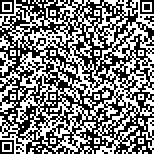Probe into the Application of Monitoring Wet Snow in South China in Heavy Snow storm and Frost Disasters 2008 with Satellite Passive Microwave Data (SSM/I)
- Article
- Figures
- Metrics
- Preview PDF
- Reference
- Related
- Cited by
- Materials
Abstract:
During the January to the early February in 2008, the southern parts of China had suffered from a wide range of heavy snowstorms and frost disasters, w hich were featured by wide area, intense, long duration and disaster consequence s. The disaster information of the covered area of the ground snow is very import ant for public meteorological service, and decisionmaking. Currently, the stud ies of passive microwave monitoring snow carried by European and Americancountries as well as China, are concentrated on the dry snow conditions in the a rea at higher latitudes, or in the polar regions.While there are few research f ocus on the thin snow, wet snow identification. Because the south part is lo cated in the lower latitude, with the day and night temperature which fluctuates aro und 0℃ during the snowstorm and frost disasters, the mixture of rain, snow, and sleet make the snow fall on the ground always wet. The existence of the liquid w ater in the snow layer could greatly change the radiation signal, and a little l iquid water in the snow could cause a sharp rising of the microwave bright tempe rature. Based on the bright temperature difference between the day and night whe n the changes of the snow in freezethaw in the South China, more snow distribu tion information in the lower latitude could be available by using the passive m icrowave data (DMSPSSM/I) to build a compensate way of monitoring the snow in the South China combined with other snow products.
Keywords:
Project Supported:
Clc Number:


Mobile website









